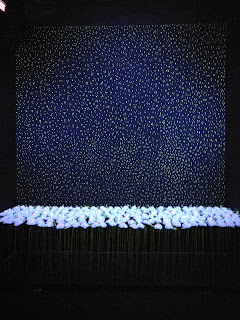Bakat Muda Sezaman 2016 @ NVAG
Despite lowered expectations, I remain perturbed by the disappointment felt each time, when viewing works by relatively young Malaysian artists. Typically, the lacklustre quality can be attributed to three values in judgement: aesthetically not attractive enough (visual cues are derivative), conceptually weak (what can I learn more about this condition being highlighted via art?), and/or poor execution (a good idea is not enough). Walking past grotesque creations, bizarre contraptions, and a trapped Ultraman, one notices only three paintings on show. The increase of competition submissions utilising non-traditional mediums is encouraging on paper, although the final output leaves much to be desired. Technology is utilized to encourage audience interaction; However, a number of animated videos fail miserably with its amateurish presentations.
 |
| Installation snapshot of Helmi Azam Tajul Aris – Kepada Sesiapa Yang Berkenaan (2017) |
Whenever encountering an artwork that hints at Malaysia’s multiculturalism, I am immediately suspicious, as a personal conviction surfaces that Balai is only a venue for promoting tourism. This observation applies to the mini heritage buildings of Ipoh scattered around in one gallery, and one woodcut/animation installation depicting the bamboo-slapping Magunatip dance. Liu Cheng Hwa’s ‘Golden Shaft’ is attractive yet obscure, and subscribes to a contemporary form more palatable to an international art audience. A number of works fall into this category, including creations by Haffendi Anuar and Saiful Razman that project formal concerns, social engagement projects by Hings Lim and Ho Mei Kei, and installations by Faizal Suhif and Haslin Ismail which generate spectacles.
 |
| Hafizzudin Abdul Jaidin – Magunatip Orang Kita (2016) |
Tetriana Mohamed Fauzi arranges manipulated fabric and domestic wares into symmetrical patterns, with drawn objects representing fragments of the artist’s life adding to her charming wall display. One standout exhibit belongs to Yusri Yusoff, whose “Siri Buai Pesaka” are constructions made with wood salvaged from old Malay houses. A white plaster cast is strung onto each rocker, which together with the kain kuning and kemenyan displayed in front, and projecting light sequences, result in a compelling and mystical installation. Working with culturally-specific objects to comment upon a culture tends to be an effective approach, as one admires the artist’s attempt to preserve Malay-ness in a time when (a particular type of) religious practices are made synonymous with an ethnic group.
 |
| Installation view of Aiman Yusri Mohamad Yusoff – Siri Buai Pesaka (2016) |
Two lighted-up installations leave good impressions too – Haris Abadi’s ‘Teletopia’, and ‘Kepada Sesiapa Yang Berkenaan’ by Azam Aris. Haris arranges a park scene complete with tree, leaves, and bench, while a talking face is projected onto a rock. Its mobile messaging sounds and casual chatter (“Bro!”) are witty, and offer an empathic take on the impact digital technologies have on our lives. On the flipside, Azam utilizes UV lights to illuminate a dark room with paper flowers and a starry wall, offering the visitor a moment of silence. The wall statement adds to its poetic poignancy: “’Maaf’ itu dapat merobohkan tembok ego yang kian menebal di dalam diri kita semua. Maaf ruang ini, maaf masa kini dan maaf tenaga gelap ini.” Bias and judgement soften in quiet solitude, as I unwittingly submit to be one of the concerned…
| Installation view of Haris Abadi – Teletopia (2017); Detail snapshots inset |
Competition submissions this round was notably lesser, after the fiasco that happened in the previous edition of the Young Contemporaries. Alas, leave it to the hidden hand to further undermine this competition. Despite judging sessions having already take place, Samsudin Wahab’s “Fakta Auta” wall presentation – an anti-KL Biennale logo, and fake news photographs – was removed two weeks after going up. Upon hearing this news, I thought of two other exhibits that somehow became relevant after this turn of events. Khairul Ehsani Sapari’s post-performance wall text for ‘Merdeka’ makes mention of “…destructive criticism and rejection.”; While one imagines ‘Meng-Wap’ by Melcom Anak Angkun as depicting the faceless oppressor. Whose art is more audacious? The one who presents exaggerated facts? Or the one who shows a looping video of steam?
| [left] Installation view of Samsudin Wahab – Fakta Auta (2017), taken by author on 13th February 2017; [right] Picture from Fergana Art Facebook page, dated 18th February 2017 |
Comments
Post a Comment